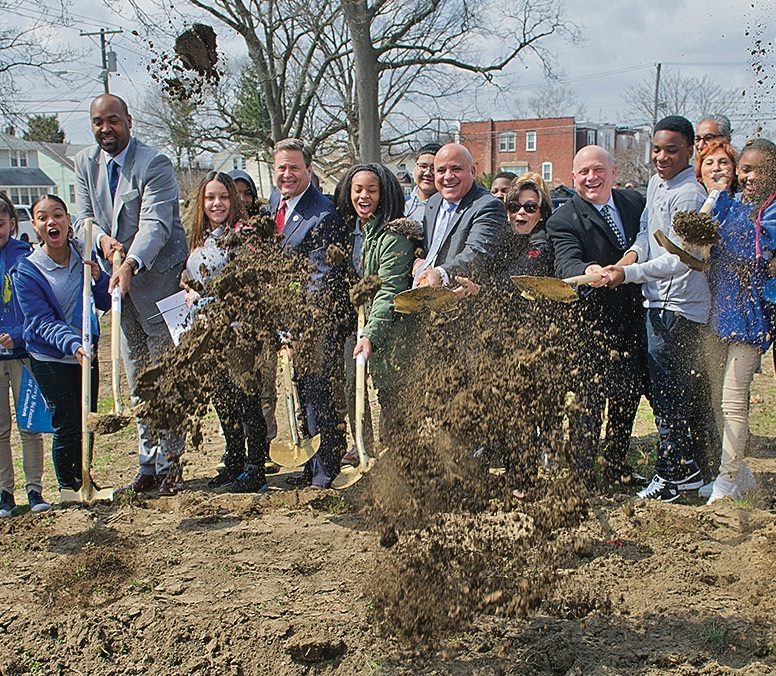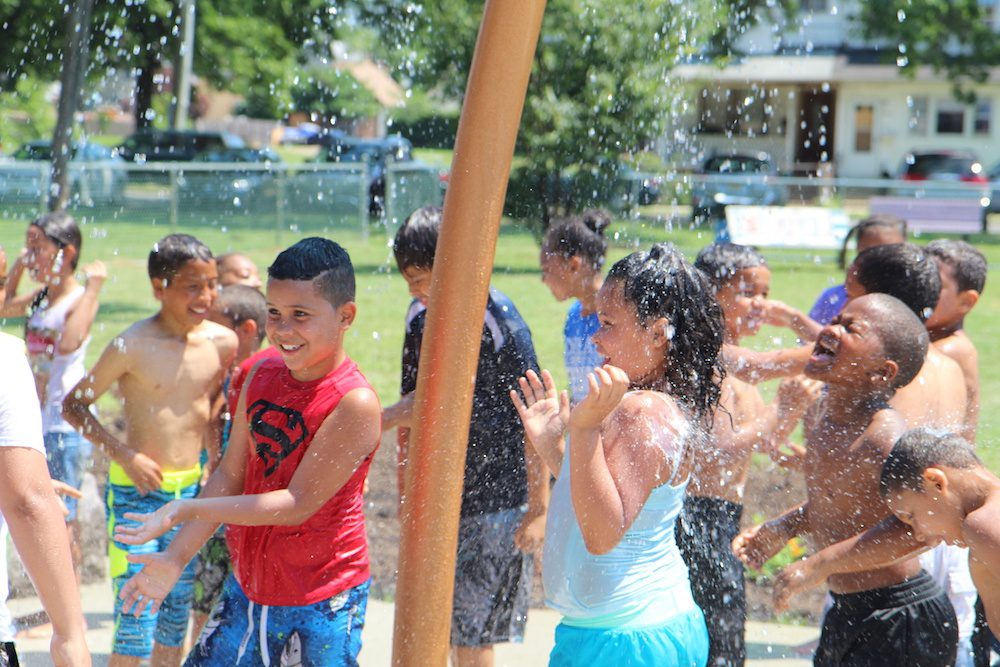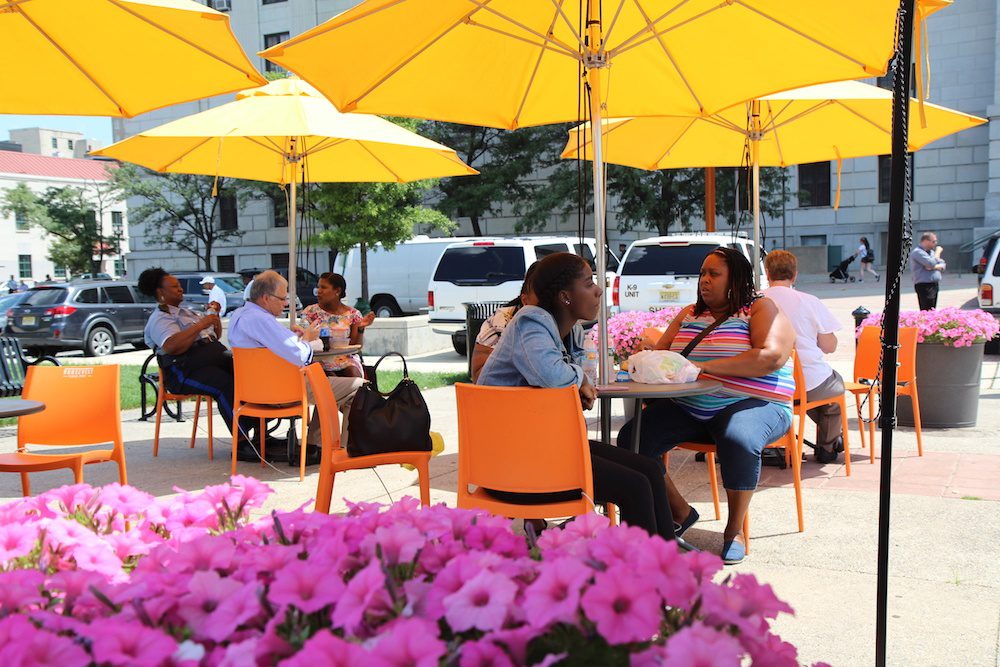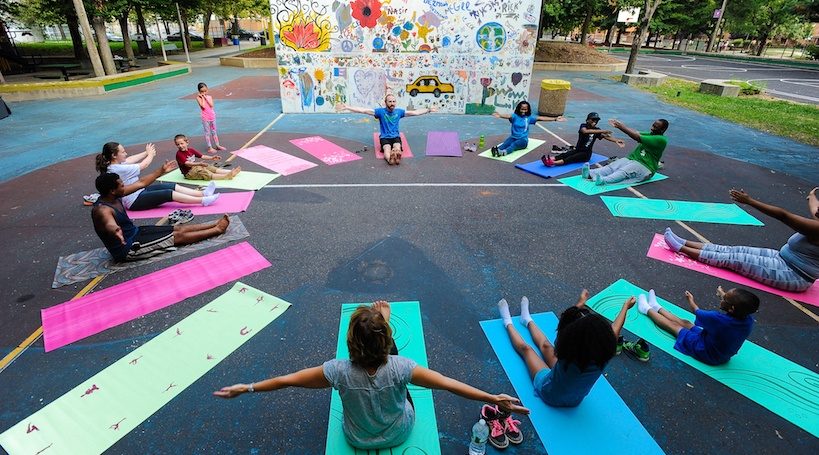The New Camden
A four-part series on all the reasons you should love Camden
Presented by Cooper’s Ferry Partnership
 Big changes have been happening in Camden. Jobs and investments are flowing into the city as major corporations – like American Water and Subaru of America – relocate their headquarters to the Camden waterfront.
Big changes have been happening in Camden. Jobs and investments are flowing into the city as major corporations – like American Water and Subaru of America – relocate their headquarters to the Camden waterfront.
But perhaps even more vital to the city’s future than the multimillion dollar buildings that house those companies is the work being done to outside spaces: parks, gardens and playgrounds are being enhanced and revitalized across the city.
Investment in parks and recreation is one of the most essential missions of Cooper’s Ferry Partnership, a nonprofit organization that works with city, county and state leaders, residents and businesses to create public-private partnerships for the betterment of Camden’s future. When it comes to the city’s parks, much is at stake.
“Play is a key component of life,” says Bryan Morton, a lifelong Camden resident, president of the North Camden Little League, and – as he calls himself – Camden’s biggest cheerleader.
“Over a third of our city’s population is under the age of 18.” says Morton. “When a city falls on hard times, the first thing to go is funding for public spaces and youth activities. To deny the need for parks and public spaces in our neighborhoods and not support our parks was literally robbing children of an opportunity to be children.”
When city leaders discussed what needed to change first, it was always the parks. Largely unused by neighborhood families, many of them had become a gathering place for drug dealers and addicts.
 “Unless you’re going to enhance the quality of life in the community, there’s no point in trying to draw companies to it,” says Camden County Freeholder Jeff Nash, liaison to the county parks department.
“Unless you’re going to enhance the quality of life in the community, there’s no point in trying to draw companies to it,” says Camden County Freeholder Jeff Nash, liaison to the county parks department.
“We wanted to take the parks in this dilapidated system that were overrun by drug dealers and crime, and convert them into the best parks in the county system,” says Camden Mayor Frank Moran.
“The parks in Camden,” Congressman Donald Norcross adds, “will be worthy of the kids and families who live there. It’s not about trying to preserve a piece of property – we’re trying to strengthen a community.”
And that’s where Cooper’s Ferry Partnership has come in, bringing together community leaders, business owners and elected officials and working to procure funding and grants for sweeping improvements. “Improving and activating the public realm,” explains Kris Kolluri, President and CEO of Cooper’s Ferry Partnership, “is a pathway to build a stable Camden and its brand identity.”
“Cooper’s Ferry Partnership has played a crucial role in convening the community, assisting the community and ensuring their visions are being captured and presented to the stakeholders who have the resources to make those things possible,” Morton says.
While some of the funding for the earliest projects came from outside the city, the vision for what Camden’s parks could be came from the people living around them.
“Something we’ve learned over the years: the government cannot simply come in and build a park,” Nash says.

“The parks in Camden will be worthy of the kids and families who live there. It’s not about trying to preserve a piece of property – we’re trying to strengthen a community.” – Congressman Donald Norcross
“You need to engage the community to find out what they want to see in their parks. Community members take pride in that ownership, and they take control of their community park. People want to have an ownership interest in their park, and Cooper’s Ferry has done a great job of facilitating that.”
Pyne Poynt, North Camden’s largest park and once, Nash says, “the worst park in the state,” reopened in 2014 after a $4 million rehabilitation project. Today, it’s the home of Morton’s little league and a shining example of success for Cooper’s Ferry Partnership mission.
“I definitely think Pyne Poynt played a crucial role in demonstrating not just the need, but the possibility and what it could mean to the community,” Morton says.
“Cooper’s Ferry was crucial in leading the planning process, and they understood that this park should belong to the people of North Camden. You don’t go to Pyne Poynt and see litter. That was one of the arguments when we were trying to get funding. We’d get asked, ‘Well, who’s going to take care of it?’ And I would say, ‘If you put it there, we’ll take care of it.’”
That sense of community ownership extends to other park projects, too. In April, city officials, the county Freeholder Board and Cooper’s Ferry Partnership broke ground on the renovations of East Camden’s Alberta Woods Park. The design for the park’s new features came from the Mastery Parent Action Team – a dozen or so parents of students from Mastery Charter Schools, East Camden Middle School and McGraw Elementary.
“We talked about how our kids couldn’t go to this park,” says Mastery Parent Action Team member Kim Davis. “I used to live across the street, and it wasn’t safe.”
“The parents and students got together and talked about what we wanted to see in the park,” Davis continues. “Once it’s done, there’ll be a spray water park, a walking path with mile markers, an amphitheater and swings for little kids and bigger kids. It’ll be somewhere for the kids to be safe.”
Alberta Woods is the first of a number of parks slated to be rehabilitated using $5 million allocated by Camden County.
“This is part of a bigger initiative throughout Camden County to create pedestrian and bicycle parks and revitalize green space,” Nash says. “In Camden, that’s highlighted by a trail that will run from the Ben Franklin Bridge, around the perimeter of Camden City and all the way to Winslow Township.”
There’s also Gateway Park and Cramer Hill Park, a converted landfill and former contamination site, respectively – both of which are currently under construction.

“It’s amazing to see how far we’ve come as a city in regards to how we view our public spaces.” – Bryan Morton, President of the North Camden Little League
Whitman Park, South Camden’s Reverend Evers Park and Lanning Square’s Fourth and Washington Park also have planned renovations. The ultimate goal is to make sure every kid living in a Camden neighborhood can walk for 10 minutes or less and be in a park.
“It’s amazing to see how far we’ve come as a city in regards to how we view our public spaces,” Morton says.
“We know those things are what help drive the health of a community. They improve physical health, but also how individuals identify with their community and what they see as possible in their community. I’m ecstatic about where we are today and about the commitment Cooper’s Ferry has shown to making sure the needs of the community are being met as other kinds of development were growing. They understand the need to make sure we aren’t leaving behind the city that was already here.”
The change won’t happen overnight. But for lifelong Camden residents like Davis, the progress is remarkable.
“It didn’t take any time to tear this city down,” she says. “Now it’s being built back up, and that takes a little longer, but I see the change.”














